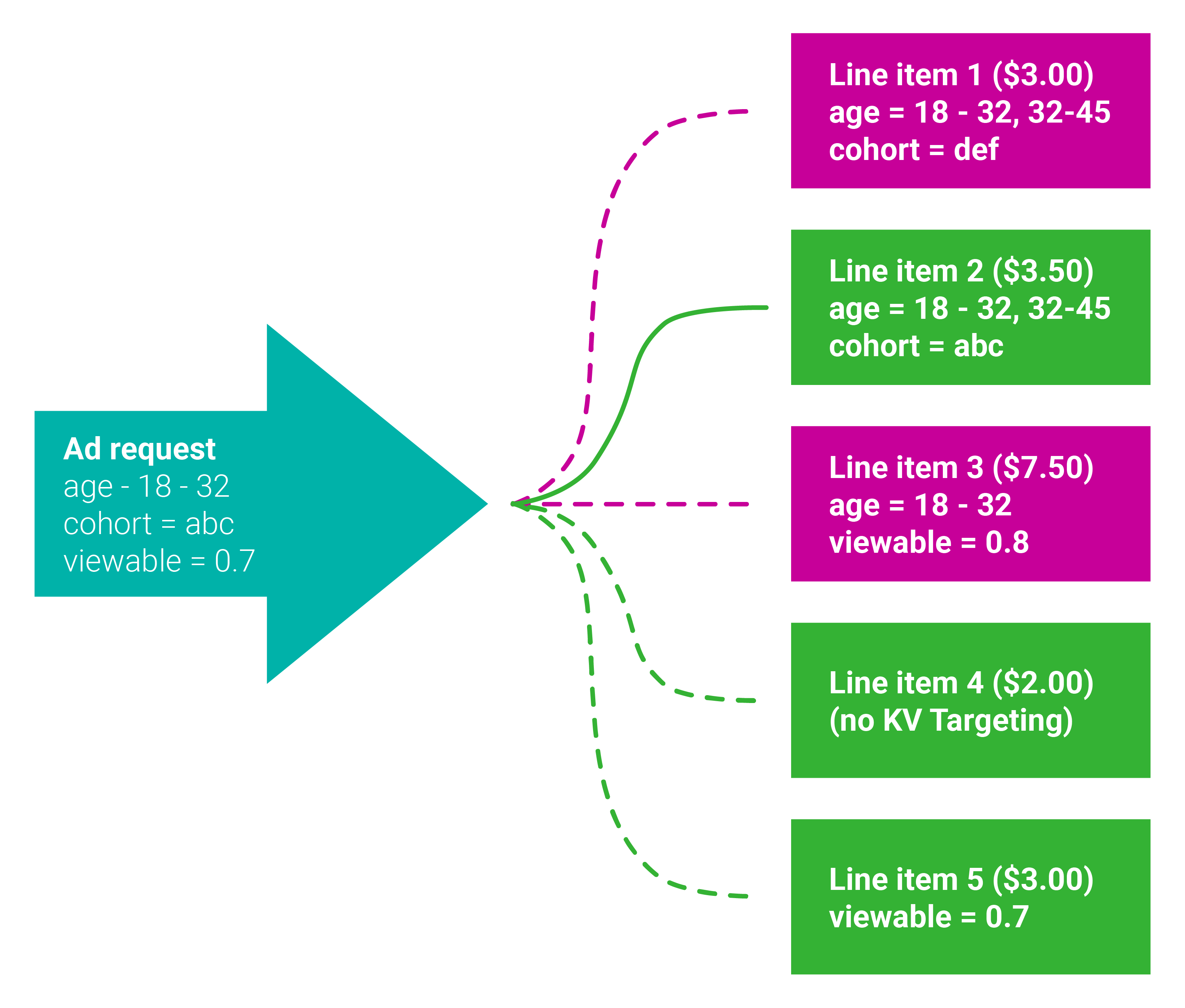You may have heard of key-value targeting before, a feature offered in Google Ad Manager (GAM) and other ad servers. Key-value pairs define custom targeting parameters within Google’s ad server. But how can publishers benefit from using them, and why is it important to use them in your reporting and optimization strategy? Read on to find out.
What Are Key-Value Pairs?
Key-value pairs can be extremely helpful in targeting specific demographics and helping to get ads seen by the right pair of eyes.

Key-value pairs are custom targeting tags that can be attached to ad units in GAM which pass additional information to the ad server for each ad request. Key-value pairs consist of two elements; a key (such as “age”) and a value (“18-32 years”). After setting up key-value tags in GAM, if a line item targets a specific key-value pair the ad server will only place that line item on publisher inventory that includes said key-value in the ad request.
Types of Key-Value Pairs
There are two types of key-value types; predefined and dynamic.
Predefined
Predefined key-value pairs have a limited, pre-defined set of possible values. They are best utilized when publishers already know the possible range of values. For example, if you create a key “age” with possible values “0-18”, “18-32”, “32-45”, “45+”. Pre-defined key-values allow publishers to get full reporting insights into each key-value pair.
Dynamic
Dynamic key-value pairs use a defined key but have dynamic values, for example any number or a freeform text value. Dynamic key-values could be used to target ads to a user based on their specific search terms on a site, or to pass in an engagement score. Dynamic key-values allow publishers to have many targeting values without having to define them in advance, but don’t allow reports broken down by individual values.
How Publishers Benefit From Using Key-Value Pairs
The primary benefit of key-value pairs is the ability for publishers to create custom targeting packages in order to sell them at higher CPMs than their run-of-site inventory. The added context provided by key-value pairs is a critical component to identifying high-performing segments that are highly valued by advertisers. These desirable segments are a way to improve overall revenue.
Publishers can also leverage key-value pairs to gain a more granular understanding of ad performance as it relates to different attributes such as contextual categories. Reporting on key-value metrics can drive higher level insights into website traffic and provide information about your site’s unique visitors. Employing key-value pair targeting and reporting as part of your contextual strategy is a simple and often underutilized way to improve revenue and match content with the right audience.
Key-value pairs are useful for identifying context and targeting other ad inventory but are most useful to publishers when based on demographic information and in conjunction with reporting to create unique ad targeting strategies (i.e. creating custom values for specific demographics) that suit publishers’ goals.
Key-Value Pairs in DV Publisher Suite
DoubleVerify’s Publisher Suite (DVPS) can help harness the power of key-value pairs. While DVPS does not collect data or serve ads based on key-value pairs, users can analyze these values within the server for their optimization needs.
With DV’s Quality Targeting, publishers can leverage signal IDs with key-values to create custom inventory packages. Lastly, publishers can feel secure that DV’s signals are privacy friendly, using no persistent tracking or third-party cookies. All of this is enabled by a DVPS tag that enables Quality Targeting without increasing page load times.
- Fraud Targeting Signal
- Viewability Prediction Signal
- Brand Suitability Categorization Signal
- Contextual Classification Signal
These signals enable revenue-generating actions for publishers. These can come in during the sales cycle, such as enabling the ability to sell packages that only deliver to contextually relevant inventory, or including viewability or fraud-free guarantees. They can also account for an advertiser’s brand safety or suitability requirements without the need for manual input. Instead of having to micro-manage placements and campaigns, all of these signals are automatically triggered pre-delivery.
When it then comes time to report on those metrics, publishers can utilize a combination of different IDs to create custom segments of their traffic. DV’s Unified Analytics aggregates and normalizes your advertising data all in one place and provides powerful tools to customize your reporting and data presentation.
Request a demo if you’d like to learn more about Quality Targeting or how else we work to help publishers enhance reporting and optimization strategies.






